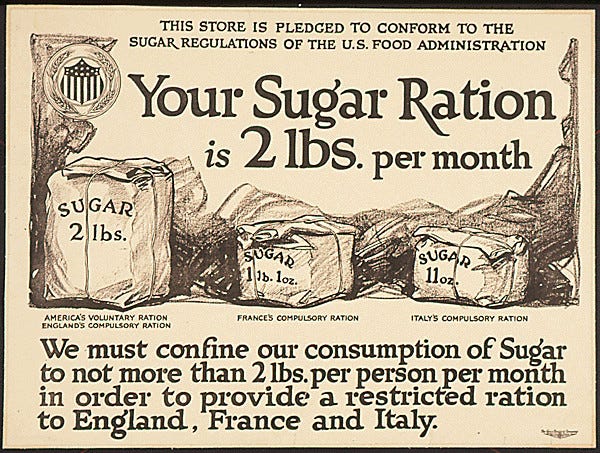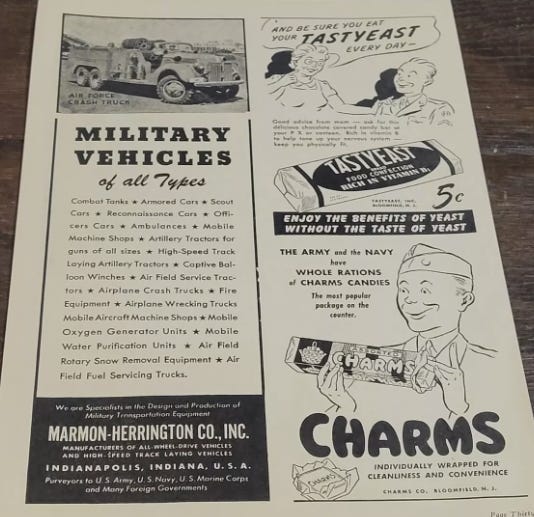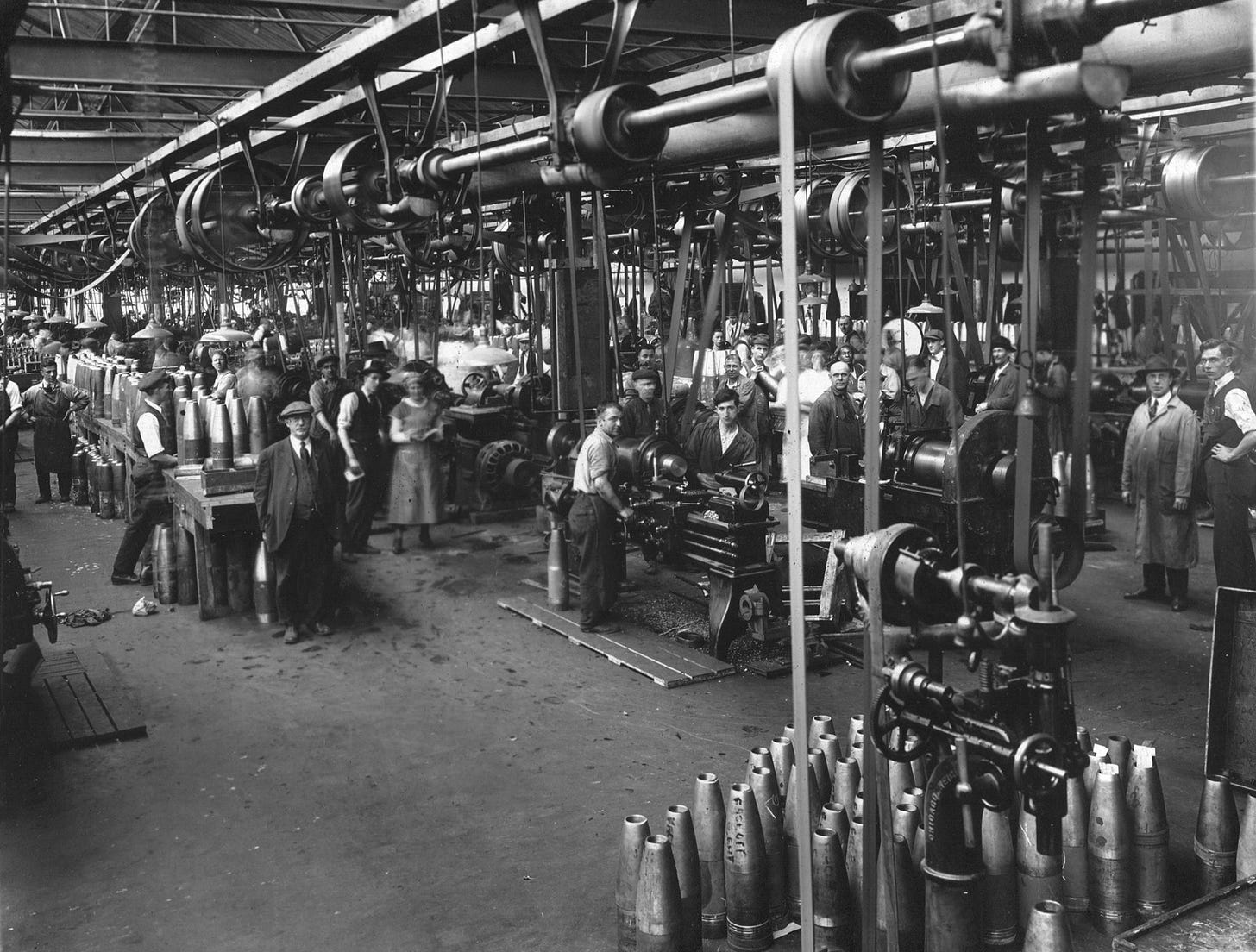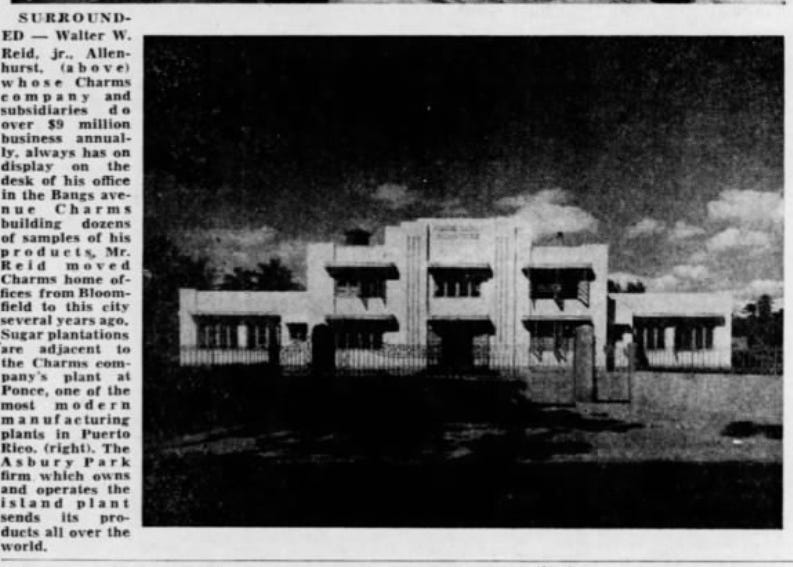In an article published on June 20, 1948, in the Asbury Park Press under the headline, “Walter W. Reid, Jr., Founder of Charms Firm, Started His First Business Enterprise at 12”, reporter Richard F. Gibbons writes:
Walter Williamson Reid, Jr., was a “magnate” when he was a 12-year-old boy attending grade school in Baltimore. And he’s a tycoon today, more than 50 years later, as head of the concern which makes more hard candy than any other confectioner in the world.
According to Gibbons, Walter Reid started The Charms Candy Company at age 32, in 1913 (other sources list 1912 as the founding year).
Reid’s primary innovation was in the packaging of his candies. Gibbons notes that “Charms were the first nickel-a-package candies.”
Shopkeepers in those days sold candies that were kept in glass jars. Customers would point to what they wanted, at which point the candies would be poured out, measured, packaged, and sold. Pre-packaged candy, Walter theorized, would net greater profits.

The twentieth century’s wars produced massive disruptions in the candy business. Gibbons explains:
The first year after the World War I armistice brought near-ruin. Speculation in sugar futures proved financially disastrous to the Charms Company. And severe illness felled Mr. Reid. He came thru both misfortunes. Thru an equity receivership, his firm gave creditors bonds for 100 percent of their claims, while stockholders received equity in stocks. All bonds and interest have long since been paid in full and stockholders have received dividends regularly. Mr. Reid himself was the company’s receiver.
Between the wars, Charms expanded into a multinational conglomerate, counting Tastyeast, Jane Gray company, and Sugar Products company among its subsidiaries.

In the beginning
The main Charms factory from 1919 to 1973 was a converted munitions plant on the corner of Grove Street and Bloomfield Avenue in Bloomfield, NJ.

Mark Sceurman, from The Bloomfield Historical Society, detailed the factory’s history in a 2019 post on the organization’s Facebook page:
Many of us can still remember the Charms Candy Factory at the corner of Bloomfield Avenue and Grove Street, but what is mostly forgotten today is that from the summer of 1915 to the end of 1918, the factory was home to of one of the largest arms manufacturers in the United States—The International Arms & Fuze Company.
At its peak, it employed 10,000 workers, including over 4,000 women working night and day to produce millions of artillery shells and fuses for the allied war effort against Germany in World War I.
The plant had its own railroad siding and water supply, as well as medical facilities, a laboratory and a cafeteria. The workers had their own band, baseball team, bowling league and women’s basketball team.
Initially, its presence in town aroused fears of explosions, fiery catastrophe and plummeting property values. In reality it brought tax revenue, employment, town improvements and the expansion of public transportation.
Today, on the site where the factory once stood, is a nondescript strip mall with a large parking lot.
Walter Reid eventually moved to Allenhurst, NJ, and he set up the Charms headquarters in nearby Asbury Park.

The Charms Company also had a subsidiary in Ponce, Puerto Rico, which included a factory (shown below in a photograph featured alongside the 1948 Asbury Park Press article) and the surrounding sugar plantation.

Jay Reid’s early career turn
Jay graduated from Washington & Lee University (W&L) in 1938 with a degree in journalism. The late 1930s are generally considered part of the Great Depression, but that umbrella term obscures the decade’s economic ups and downs.
Jay’s graduation timing was unlucky. The recession of 1937-38 reversed years of steady economic progress. The unemployment rate rose from 14.3% in December 1937 to 19.0% in December 1938.
Not surprisingly, Jay struggled to find work. His first full-time job after graduation was in Uncle Walter’s candy factory back home in New Jersey. According to a 1988 W&L alumni profile, “In 1938, [Jay] played the ‘lollypop and gum-drop game,’ joining Charms Candy Co.”
Jay provided more context, and drew a connection to Karl Harr, in a December 2001 letter he sent to Princeton alum and former U.S. Senator from New Jersey Bill Bradley, whom Jay had nominated to be the next president of W&L. Jay writes:
I was born in Newark and lived in Montclair through the nineteen thirties. My father’s income suffered during the extended depression. If I had not been offered chores for lower tuition, I would not have graduated from Montclair Academy.
…I have noted your interest in business decisions, good and bad. From two years [sic] employment with a Bloomfield industrial plant, I learned much that proved useful for newspaper reporting and thirty years with the International Monetary Fund.
From another point, I mention Karl Harr, a cousin raised in South Orange. At Princeton, he made high grades, was president of his class and captain of the football team. His plane returning from the CBI [China, Burma, India] war theater plunged into the ocean. Karl clung to the wreckage for seven hours before rescue. He took his law degree at Yale, and with a Rhodes Scholarship, studied at Oxford.
I will return to this very important passage in a later post.
Charms: An American tale
The first World War nearly bankrupted the Charms Company. Walter was not about to let that happen again.
I have yet to fully document the precise details, but at some point before or during World War II, Charms was awarded a contract with the Department of War (now the Department of Defense) to include Charms candy in military rations.
The host in the below video opens a previously untouched life raft ration from WWII and tries each of the nearly 80-year-old foods. The candies were still good!
The military continued to include Charms candies in MREs through 2007, long after the Reid family had sold the company.
The sale came in 1988. Walter III, who took over when his father died in March 1960, was ready to retire. He did not have any direct heirs; his lieutenants were his nephews.
In a deal originally suggested by current U.S. Senator, Mitt Romney, who was then a consultant, Charms was sold to another family-controlled candy firm, The Tootsie Roll Company, for $65 million.

At the time of the sale, Charms was headquartered in Colts Neck, NJ. Sadly, the old headquarters, as well as the area around it, in Asbury Park fell into disrepair after Charms’ departure.
In 2010, the building was demolished.

Cuba
One question continued to eat at me long after I pieced together the basic story of the Charms Company.
On January 17, 1920, Charms founder Walter Reid, Jr. and his younger brother, Jay (Jay Jr.’s father and my great-grandfather) applied for passports in order to travel to Cuba. Jay Sr., who worked in the Insurance industry, had helped his brother start Charms and was involved in the business in its early years.
Walter’s passport application lists “business and pleasure” as the reasons for the trip. I knew the brothers actually went to Cuba because an immigration document confirms their return to Key West, Florida on February 12, 1920, aboard a ship that had departed from Havana, Cuba the prior day.
And that is where the case went cold.
Richard Gibbons did not mention Cuba in the Asbury Park Press article. Likewise, none of the Facebooks groups in Bloomfield or the countless message board posts I reviewed related to the Charms Company said anything about a Cuban connection.
Who were Walter and Jay Sr. going to meet? What happened?
For more than a year, I couldn’t figure it out.
Then, one Sunday morning, I got lucky with a search query.
It turns out, the brothers Reid most likely met with Spanish industrialist Jose Arechabala, whose holdings in the Cardenas region of Cuba included a major distillery and sugar refinery. In 1921, he incorporated these and other business entities under the corporate name Jose Arechabala S.A.
The trip to Cuba resulted in the Charms Company and Jose Arechabala S.A. entering into a partnership that would prove mutually beneficial.
With a stable partner in a sugar-producing country, Charms recovered from near bankruptcy in 1919 and would go on to become the world’s largest manufacturer of hard candy, while Jose Arechabala S.A., thanks in part to a steady revenue stream from its American partner, would reach new heights following the release of its now world-famous Havana Club Rum in 1934.
Only when the bearded men came down from the Sierra Maestra did things get a little complicated.
A previous version of this article stated that the Tootsie Roll company was family-owned in 1988, rather than family-controlled. Additionally, an earlier version of a caption said that the Tootsie Pop was invented after the Charms acquisition, rather than before it, as was correctly noted in The New York Times article from 1988.





